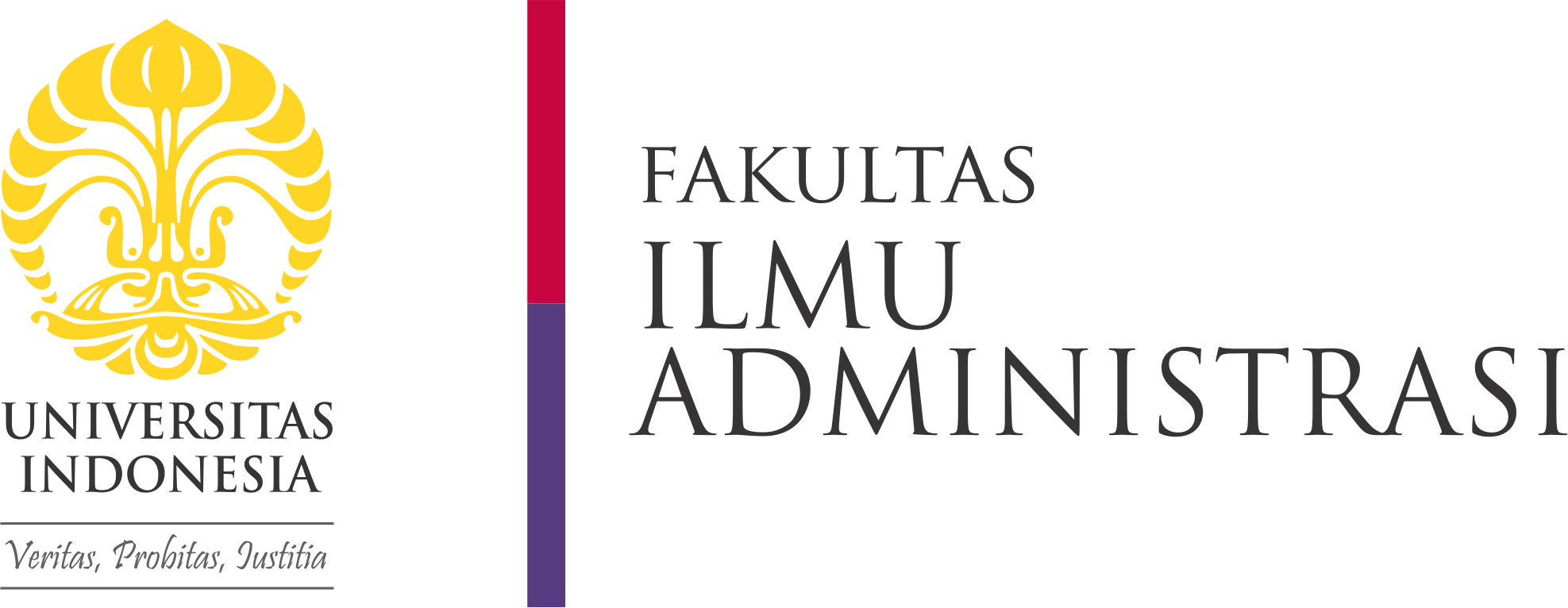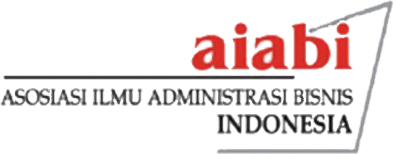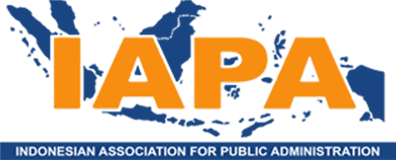Creative Commons License

This work is licensed under a Creative Commons Attribution-Share Alike 4.0 International License.
Abstract
The role of the internet in reducing poverty has been tested in several countries. However, according to bibliometric analysis, not much has been studied from the perspective of inclusive digital public administration. This research's novelty is to complements the digital governance research by analyzing the relationship between digital competitiveness and poverty rates in Indonesia. This study aims to map the challenges of developing digital governance in Indonesia in the context of promoting sustainable development and more inclusive society. The research method uses descriptive quantitative with quadrant analysis techniques. The data used are the poverty rate from the Indonesian Central Bureau of Statistics in 2021 and the Digital Competitiveness Index. The results of the study show: (i) there is a digital divide or digital poverty that contributes to the Digital Competitiveness gap; (i) the behavior of digital users for productivity is still low but shows an increase from the previous year. In conclusion, digital development must be designed to pursue inclusive and pro-poor development, supported by productive human resources. Further research is recommended to examine the correlation between components of the digital development index and the components of the poverty index to build model of inclusive digital public administration.
References
Adams, S., & Akobeng, E. (2021). ICT, Governance and Inequality in Africa. Telecommunications Policy, 45(10), 102198. https://doi.org/10.1016/j.telpol.2021.102198
Ajzen, I. (1991). The Theory of Planned Behavior. Organizational Behavior and Human Decision Processes, 50(2), 179–211. https://doi.org/https://doi.org/10.1016/0749-5978(91)90020-T
Akindele, F. A., Adepoju, K. O., Omole, S. M., Adebayo, T. T., & Adeojo, M. B. (2020). The effect of Internet Technology on Employment towards a Jobless Society. International Journal of Academic Library and Information Science, 8(6), 204–208. https://doi.org/10.14662/IJALIS2020.205
APJII. (2022). Profil Internet Indonesia 2022. In Apji.or.Od (Issue June). SRA Consulting.
Bach, A. J., Wolfson, T., & Crowell, J. K. (2019). Poverty , Literacy , and Social Transformation : An Interdisciplinary Exploration of the Digital Divide . JMLE, 10(1), 22-41. https://doi.org/10.23860/JMLE-2018-10-1-2
Balashov, A., Barabanov, A., & Ivanov, M. (2020). Prospects for Digital Transformation of Public Administration in Russia. SPBPU IDE 20. https://doi.org/10.1145/3444465.3444506
Bauer, J. M. (2018). The Internet and income inequality : Socio-economic challenges in a hyperconnected society. Telecommunications Policy, 42(4), 333–343. https://doi.org/10.1016/j.telpol.2017.05.009
Bayar, Y., Gavriletea, M. D., & Dragos Paun. (2021). Impact of mobile phones and internet use on financial inclusion : empirical evidence from the EU post-communist countries. April. https://doi.org/10.3846/tede.2021.14508
Burlacu, B. S., Popescu, M. L., Diaconu, A., & Sârbu, A. (2021). Digital Public Development Administration for Sustainable. European Journal of Sustainable Development, 10(4), 33–40. https://doi.org/10.14207/ejsd.2021.v10n4p33
Castro, C., & Lopes, C. (2021). Digital Government and Sustainable Development. Journal of the Knowledge Economy, 13. https://doi.org/10.1007/s13132-021-00749-2
Chao, P., Biao, M. A., & Chen, Z. (2021). Poverty alleviation through e-commerce : Village involvement and demonstration policies in rural China. Journal of Integrative Agriculture, 20(4), 998–1011. https://doi.org/10.1016/S2095-3119(20)63422-0
Denzer, M., Schank, T., & Upward, R. (2021). Does the internet increase the job finding rate? Evidence from a period of expansion in internet use. Information Economics and Policy, 55, 100900. https://doi.org/10.1016/j.infoecopol.2020.100900
Edquist, H. (2022). The economic impact of mobile broadband speed. Telecommunications Policy, 46(5), 102351. https://doi.org/10.1016/j.telpol.2022.102351
Edquist, H., Goodridge, P., Haskel, J., Li, X., & Lindquist, E. (2018). How important are mobile broadband networks for the global economic development?. Information Economics and Policy, 45, 16–29. https://doi.org/10.1016/j.infoecopol.2018.10.001
Fattahi, Z., Mathai, S., Khan, A., Gold, M., & Simms, A. (2022). The Inclusive Internet Index Five-year lookback report. retreieved from https://impact.economist.com/projects/inclusive-internet-index
Fishbein, M., & Ajzen, I. (1977). Belief, Attitude, Intention, and Behavior: An Introduction to Theory and Research. Philosophy and Rhetoric 10(2), 130–132). https://philpapers.org/rec/FISBAI
Gürtzgen, N., (né Nolte), A. D., Pohlan, L., & van den Berg, G. J. (2021). Do digital information technologies help unemployed job seekers find a job? Evidence from the broadband internet expansion in Germany. European Economic Review, 132. https://doi.org/10.1016/j.euroecorev.2021.103657
Hidayat, Andhy, Prasetyia, Ferry, & Pangestuty, F. (2021). Role of Internet Accessibility in Reducing the Poverty rates in Java; a Spatial Approach. Journal of Applied Indonesian Economics, 9(1), 21–31.
IMD Team. (2022). IMD World Digital Competitiveness Ranking 2021. IMD World Competitiveness Center, 96–97. retreived from https://www.imd.org/globalassets/wcc/docs/release-2017/world_digital_competitiveness_yearbook_2017.pdf
Janowski, T., Estevez, E., & Baguma, R. (2018). Platform governance for sustainable development : Reshaping citizen- administration relationships in the digital age. Government Information Quarterly, September, 35(4), 1–16. https://doi.org/10.1016/j.giq.2018.09.002
Khomarul Hidayat. (2022). Indonesia Urutan 73 Negara Termiskin di Dunia. Kontan.co.id. retreived from https://nasional.kontan.co.id/news/indonesia-urutan-73-negara-termiskin-di-dunia
Kohnert, D. (2021). The impact of digitalization on poverty alleviation in Africa. Munich Personal RePEc Archive (MAPRA). 2021, p. 110296. https://mpra.ub.uni-muenchen.de/110296/ (accessed on 25 July 2022)
Marhaeni, H., Supriadi, A. Y., Supriadi, et al. (2022). Indeks Pembangunan Teknologi Informasi dan Komunikasi 2021. In F. Herbowo, E. Sari, & L. Anggraini (Eds.), 2022 (1st ed.). Biro Pusat Statistik Republik Indonesia. https://doi.org/8305012
Mcclure, P. K. (2017). “ You’re Fired ,” Says the Robot : The Rise of Automation in the Workplace , Technophobes and Fears of Unemployment. Social Science Computer Review, 36(2), 1–18. https://doi.org/10.1177/0894439317698637
Mecinas Montiel, J. M. (2016). the Digital Divide in Mexico: a Mirror of Poverty. Mexican Law Review, 9(1), 93–102. https://doi.org/10.1016/j.mexlaw.2016.09.005
Mendonça, S., Crespo, N., & Simões, N. (2015). Inequality in the network society : An integrated approach to ICT access , basic skills , and complex capabilities. Telecommunications Policy, 39(3–4), 192–207. https://doi.org/10.1016/j.telpol.2014.12.010
Moore, M. H. (2014). Public Value Accounting : Establishing the Philosophical Basis. 74(Moore 1995), 465–477. https://doi.org/10.1111/puar.12198.Public
Mulyaningsih, T., Wahyunengseh, R., & Hastjarjo, S. (2020). Poverty and Digital Divide : A Study in Urban Poor Neighborhoods. Jurnal Ilmu Sosial dan Ilmu Politik, 24(2), 189–203. https://doi.org/10.22146/jsp.52325
Nguyen, T. T., Nguyen, T., & Grote, U. (2022). Internet use , natural resource extraction and poverty reduction in rural Thailand. Ecological Economics, 196(November 2021), 107417. https://doi.org/10.1016/j.ecolecon.2022.107417
O. V. Belyakova. (2021). Development Digital Transformation of Public Administration: Achievement and Problems. European Proceedings of Social and Behavioural Sciences GCPMED 2020. https://doi.org/10.15405/epsbs.2021.04.02.22
Palvia, P., Baqir, N., & Nemati, H. (2018). Information & Management ICT for socio-economic development: A citizens’ perspective. Information and Management, 55(2), 160–176. https://doi.org/10.1016/j.im.2017.05.003
Postuła, M., Chmielewski, W., & Puczy, P. (2021). The Impact of Information and Communication Technologies ( ICT ) on Energy Poverty and Unemployment in Selected European Union Countries. Energies, 14, 6110. https://doi.org/10.3390/en1419611020
Rahman, A., Hakim, S. H., & Syafii, M. (2022). Performance and Poverty Convergence in North Sumatra. Economics Development Analysis Journal, 11(3), 294–304. https://doi.org/10.15294/edaj.v11i3.57601
Rini, A. S., & Sugiharti, L. (2017). Faktor-Faktor Penentu Kemiskinan Di Indonesia: Analisis Rumah Tangga. Jurnal Ilmu Ekonomi Terapan, 1(2), 80–95. https://doi.org/10.20473/jiet.v1i2.3252
Rogers, E. M. (1983). Diffusion of Innovations. In Diffusion of Innovation (3rd ed.). the Free Pres. https://doi.org/10.1093/oxfordhb/9780198845973.013.23
Siaw, A., Jiang, Y., Twumasi, M. A., & Agbenyo, W. (2020). The impact of internet use on income: The case of rural Ghana. Sustainability (Switzerland), 12(8), 1–16. https://doi.org/10.3390/SU12083255
Stepanova, I., Vorotnikov, A., & Doronin, N. (2020). The Potential of Digital Platforms for Sustainable Development Using the Example of the Arctic Digital Platform 2035. IOP Conference Series: Earth and Environmental Science 554(012004). https://doi.org/10.1088/1755-1315/554/1/012004
Tambuh, B., Wulandari, N., Fitri Herdayani, A. A. (2021). Identification And Planning of Poverty Areas In Palembang City. International Journal of Economics, Business and Accounting Research (IJEBAR), 5(4), 508–517. https://doi.org/https://jurnal.stie-aas.ac.id/index.php/IJEBAR
Twizeyimana, J. D., & Andersson, A. (2019). The public value of E-Government – A literature review. Government Information Quarterly, 36(2), 167–178. https://doi.org/10.1016/j.giq.2019.01.001
United Nations. (2022). E-Government Survey 2022. retreived from https://publicadministration.un.org/egovkb/en-us/Reports/UN-E-Government-Survey-2022
Ventura, E. (2022). Towards Indonesia ’ s Digital Golden Towards Indonesia ’ s Digital Golden Era. PWC & Kata Data Center.
Vu, K., Hanafizadeh, P., & Bohlin, E. (2020). ICT as a driver of economic growth: A survey of the literature and directions for future research. Telecommunications Policy, 44(2), 0–43. https://doi.org/10.1016/j.telpol.2020.101922
Wallace, J. M. (2016). Quadrant Analysis in Turbulence Research: History and Evolution. Annual Review of Fluid Mechanics, 48, 131–158. https://doi.org/10.1146/annurev-fluid-122414-034550
First Page
64
Last Page
74
Recommended Citation
Wahyunengseh, Rutiana D. and Hastjarjo, Sri
(2023)
"Digital Competitiveness and Poverty Index Quadrant: Mapping the Digital Public Administration Challenge (Evidence from Indonesia),"
BISNIS & BIROKRASI: Jurnal Ilmu Administrasi dan Organisasi: Vol. 30:
No.
2, Article 1.
DOI: 10.20476/jbb.v30i2.1379
Available at:
https://scholarhub.ui.ac.id/jbb/vol30/iss2/1






